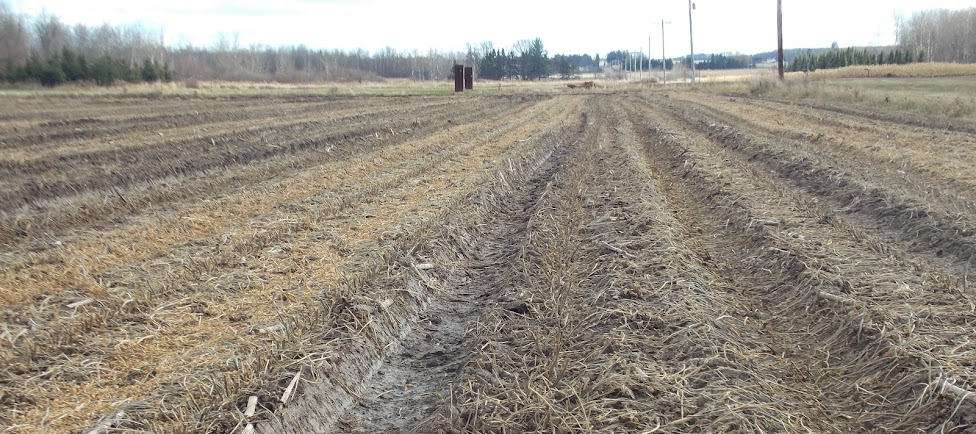Can I till and maintain (or even build) soil organic matter
by Ryan Stockwell
Tillage practices combat building soil organic carbon. Explore how to optimize your soil carbon organic carbon.

Old ideas die hard. Especially ideas explaining processes or events we cannot easily see with our own eyes. For example, the idea of a sun-centered solar system originated in 1530 by Nicolas Copernicus. The concept was hotly debated for over a hundred years. Yep, a hundred years. Even after Galileo used his telescope to prove Copernicus correct with visual evidence, it took still another hundred years for the idea of an earth-centered solar system to finally fall into the dustbin of outdated and incorrect concepts. Like I said, old ideas die hard.
The practice of tillage appears to be on a similar path. For generations, farmers believed tillage improved soil organic matter levels. Intuitively, it made sense. Decomposing plant residue is a big source of soil organic matter, so getting more of that plant residue into the soil should increase soil organic matter. But much like observers before Copernicus and Galileo who were only looking at the sun and stars from one perspective, so too did early soil scientists and farmers look at only one side of the soil organic matter equation. Yes, more plant residue will help build soil organic matter. But, what happens to existing soil organic matter when tillage occurs? Microbes in the soil, now exposed to oxygen, go on a feeding frenzy, digesting existing soil organic matter and, in the process, releasing nutrients that quickly are lost without readily available growing plants to take up those nutrients. The process of tillage is almost always a net loss in soil organic matter, regardless of soil type, when we consider the loss through decomposition. Throw in soil erosion that intensifies with tillage, and soil organic matter loss can quickly get out of hand.
Still, growers may be wondering just how much SOM can be gained or removed through various practices? For example, if a grower uses tillage only before corn and no-tills their soybeans, will their soil organic matter levels rise or fall over time? Same with adding manure? How about adding cover crops? Growers can generate a thousand different combinations of practices that can impact soil organic matter trends. But here are some general rules of thumb:
These practices will definitely build soil organic matter:
- Continuous no-till with some cover crops and/or some manure added periodically
- Perennial crops in the rotation with some manure added
Likely to slowly build soil organic matter:
- Perennial crops with annual crops in the rotation with tillage for the annual crops
Likely to slowly lose soil organic matter:
- No-till with residue removal
- Some tillage with a high biomass crop (such as corn) and low biomass crop (such as soybeans)
Will definitely lose soil organic matter:
- Fall and spring tillage every year
- Annual tillage with crop residue removal
- Crop rotation with 50% low biomass crops and periodic tillage
Put another way, the more you add cover crops, perennial crops, or manure, the more tillage a grower can do while still protecting or building soil organic matter. Failure to add these other practices will result in a decline of soil organic matter. Removing residue acts like another tillage pass in that the net impact is a decline in soil organic matter.
To fully answer the question, yes, you can till, but growers must offset tillage with soil protecting and building practices to offset the soil organic matter loss caused by tillage. Many of the practices that build soil organic matter also improve carbon sequestration.
By Ryan Stockwell, Grower Engagement Senior Manager and Wisconsin farmer
Citations
-https://store.extension.iastate.edu/Product/Tillage-Management-and-Soil-Organic-Matter-Resources-Conservation-Practices-PDF
-https://www.noble.org/news/publications/ag-news-and-views/2001/august/what-does-organic-matter-do-in-soil/
-https://www.ag.ndsu.edu/publications/crops/soil-organic-matter-does-matter
This article may include information from third-party sources or other information that Indigo may not independently verify. Carbon quantification methods, processes and understandings are in their nascency and subject to change and continuous development. The information contained herein is for general informational purposes only and may be based on generally applicable assumptions that may not be applicable to any individual operation. Actual results may differ among growers and farms based on a large number of variables. Each operation should independently consider the financial implications and all potential risks and benefits of the use of any agronomic practice. Any payments under Carbon by Indigo are subject to multi-year vesting and are contingent on continued long-term maintenance of regenerative agricultural practices and soil carbon levels. All Carbon Credits generated are subject to buffer pool holdbacks required by third-party crediting; participants will not receive payments for such holdback. Neither Indigo nor its representatives or affiliates makes any representations, warranties or guarantees as to any specific outcomes (agronomic, financial or otherwise) in connection with any recommendations, calculations or predictions. Terms, conditions, limitations and eligibility requirements apply. See program agreement for additional details regarding Carbon by Indigo.
Farmers like you are getting paid to implement practices that improve soil health. With skyrocketing input costs, see how covers help.
You might also be interested in:
Neither Indigo nor any of its affiliates makes any representations, warranties or guarantees as to any specific results or outcomes, including, without limitation, with respect to soil health outcomes or any minimum amount of greenhouse gasses sequestered or number of carbon credits generated. Participation in Carbon by Indigo is subject to the terms, conditions and limitations of the program contained in the applicable enrollment agreement. Any payments under Carbon by Indigo are subject to multi-year vesting and are contingent on continued long-term maintenance of regenerative agricultural practices and soil carbon levels. All Carbon Credits generated are subject to buffer pool holdbacks required by third-party crediting; participants will not receive payments for such holdback. Not available in all areas.
500 Rutherford Ave, Boston, MA 02129 | 844.828.0240 | info@indigoag.com